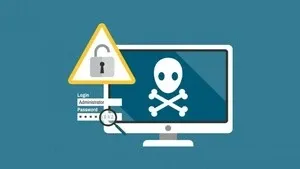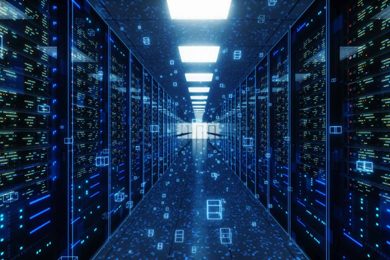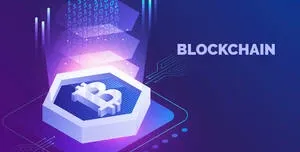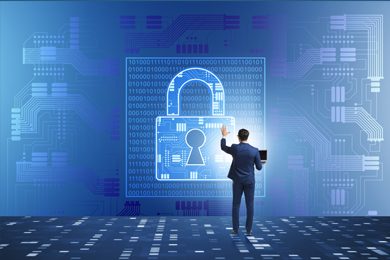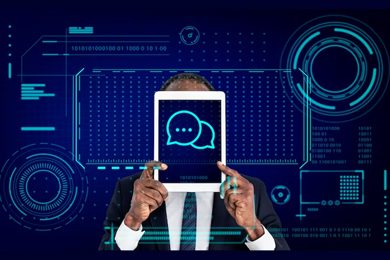This plan includes
- Limited free courses access
- Play & Pause Course Videos
- Video Recorded Lectures
- Learn on Mobile/PC/Tablet
- Quizzes and Real Projects
- Lifetime Course Certificate
- Email & Chat Support
What you'll learn?
- Networks security basic and advanced knowledge
Course Overview
By the end of this course you will be fully aware of the wired and wireless computer networks basics, devices, and protocols in a step-by-step pace. You will also reach the professional level in networks security in terms of concepts, technologies, and tools. The course requires no background or pre-requisite, yet you will be able to understand all the up-to-date terminologies in the networks security during the lectures.
This course is organized as follows:
Section One: introduction to Computer Networks
-
Lecture 1: What is a Computer Network?
-
Lecture 2: Computer Networks Topologies
-
Lecture 3: Computer Networks Categories
-
Lecture 4: Computer Networks Devices and Services
-
Lecture 5: Computer Networks Transmission Media
Section Two: ISO/OSI Model (7 Layers)
-
Lecture 1: Why ISO/OSI Model?
-
Lecture 2: Application, Presentation, and Session Layers
-
Lecture 3: Transport and Network Layers
-
Lecture 4: Data Link and Physical Layers
-
Lecture 5: ISO/OSI Model in Action
Section Three: TCP/IP Protocol Suite
-
Lecture 1: Introduction to Computer Networks Protocols
-
Lecture 2: IP Protocol
-
Lecture 3: TCP and UDP Protocols
-
Lecture 4: Application Protocols
-
Lecture 5: TCP/IP Characteristics and Tools
Section Four: Wireless Networks
-
Lecture 1: Wireless Networks Benefits
-
Lecture 2: Wireless Networks Types
-
Lecture 3: Wireless Networks Protocol (Wi-Fi)
-
Lecture 4: Wireless Networks Devices
-
Lecture 5: Wireless Networks Drawbacks
Section Five: Computer Networks Security
-
Lecture 1: Security Goals
-
Lecture 2: Securing the Network Design
-
Lecture 3: TCP/IP Security and Tools
-
Lecture 4: Port Scanning and Tools
-
Lecture 5: Sniffing and Tools
Section Six: Firewalls and Honeypots
-
Lecture 1: Why Using a Firewall?
-
Lecture 2: Firewalls Rules
-
Lecture 3: Firewalls Filtering
-
Lecture 4: Honey Pots
-
Lecture 5: Bypassing Firewalls
Section Seven: Intrusion Detection and Prevention systems (IDS/IPS)
-
Lecture 1: What is Intrusion Detection Systems (IDS)?
-
Lecture 2: Network IDS (NIDS)
-
Lecture 3: NIDS Challenges
-
Lecture 4: Snort as NIDS
-
Lecture 5: Intrusion Prevention Systems (IPS)
Section Eight: Wireless Networks Security
-
Lecture 1: Wired Equivalent Privacy WEP Attacking
-
Lecture 2: WPA and AES Protocols
-
Lecture 3: Wireless Security Misconceptions
-
Lecture 4: Wireless Attacks and Mitigation
-
Lecture 5: Secure Network Design with Wireless
Section Nine: Physical Security & Incident Handling
-
Lecture 1: Physical Security Objectives
-
Lecture 2: Physical Threats and Mitigation
-
Lecture 3: Defense in Depth (DiD)
-
Lecture 4: What is an Incident?
-
Lecture 5: Incident Handling
Section Ten: Computer Networks Security Conclusion
-
Lecture 1: Confidentiality, Integrity, and Availability (CIA)
-
Lecture 2: Assets, Threats, and Vulnerabilities
-
Lecture 3: Risks and Network Intrusion
-
Lecture 4: Common Attacks
-
Lecture 5: Security Recommendations
Pre-requisites
- Beginner and professional level of computer networks security
Target Audience
- Networks security beginners and professionals
Curriculum 50 Lectures 07:55:37
Section 1 : Introduction to Computer Networks
- Lecture 2 :
- Computer Networks Topologies
- Lecture 3 :
- Computer Networks Categories
- Lecture 4 :
- Computer Networks Devices and Services
- Lecture 5 :
- Computer Networks Transmission Media
Section 2 : ISO/OSI Model (7 Layers)
- Lecture 1 :
- Why ISO/OSI Model?
- Lecture 2 :
- Application, Presentation, and Session Layers
- Lecture 3 :
- Transport and Network Layers
- Lecture 4 :
- Data-Link and Physical Layers
- Lecture 5 :
- ISO/OSI Model in Action
Section 3 : TCP/IP Protocol Suite
- Lecture 1 :
- Computer Networks Protocols
- Lecture 2 :
- IP Protocol
- Lecture 3 :
- TCP and UDP Protocols
- Lecture 4 :
- Application Protocols
- Lecture 5 :
- TCP/IP Tools
Section 4 : Wireless Networks
- Lecture 1 :
- Wireless Networks Benefits
- Lecture 2 :
- Wireless Networks Types
- Lecture 3 :
- Wi-Fi
- Lecture 4 :
- Wireless Networks Devices
- Lecture 5 :
- Wireless Networks Drawbacks
Section 5 : Computer Networks Security
- Lecture 1 :
- Security Goals
- Lecture 2 :
- Securing the Network Design
- Lecture 3 :
- TCP/IP Security and Tools
- Lecture 4 :
- Port Scanning and Tools
- Lecture 5 :
- Sniffing and Tools
Section 6 : Firewalls and Honeypots
- Lecture 1 :
- Why Using a Firewall?
- Lecture 2 :
- Firewalls Rules
- Lecture 3 :
- Firewalls Filtering
- Lecture 4 :
- Honeypots
- Lecture 5 :
- Bypassing Firewalls
Section 7 : Intrusion Detection and Prevention Systems (IDS/IPS)
- Lecture 1 :
- What is IDS?
- Lecture 2 :
- Network IDS (NIDS)
- Lecture 3 :
- Snort as NIDS
- Lecture 4 :
- NIDS Challenges
- Lecture 5 :
- IPS
Section 8 : Wireless Networks Security
- Lecture 1 :
- WEP
- Lecture 2 :
- WPA and AES
- Lecture 3 :
- Wireless Security Misconceptions
- Lecture 4 :
- Wireless Attacks and Mitigation
- Lecture 5 :
- Secure Wireless Network Design
Section 9 : Physical Security and Incident Handling
- Lecture 1 :
- Physical Security Objectives
- Lecture 2 :
- Physical Threats and Mitigation
- Lecture 3 :
- Defense in Depth (DiD)
- Lecture 4 :
- What is an Incident?
- Lecture 5 :
- Incident Handling
Section 10 : Computer Networks Security Conclusion
- Lecture 1 :
- Confidentiality, Integrity, and Availability
- Lecture 2 :
- Assets, Threats, and Vulnerabilities
- Lecture 3 :
- Risks and Network Intrusion
- Lecture 4 :
- Common Network Attacks
- Lecture 5 :
- Security Recommendations
Our learners work at
Frequently Asked Questions
How do i access the course after purchase?
It's simple. When you sign up, you'll immediately have unlimited viewing of thousands of expert courses, paths to guide your learning, tools to measure your skills and hands-on resources like exercise files. There’s no limit on what you can learn and you can cancel at any time.Are these video based online self-learning courses?
Yes. All of the courses comes with online video based lectures created by certified instructors. Instructors have crafted these courses with a blend of high quality interactive videos, lectures, quizzes & real world projects to give you an indepth knowledge about the topic.Can i play & pause the course as per my convenience?
Yes absolutely & thats one of the advantage of self-paced courses. You can anytime pause or resume the course & come back & forth from one lecture to another lecture, play the videos mulitple times & so on.How do i contact the instructor for any doubts or questions?
Most of these courses have general questions & answers already covered within the course lectures. However, if you need any further help from the instructor, you can use the inbuilt Chat with Instructor option to send a message to an instructor & they will reply you within 24 hours. You can ask as many questions as you want.Do i need a pc to access the course or can i do it on mobile & tablet as well?
Brilliant question? Isn't it? You can access the courses on any device like PC, Mobile, Tablet & even on a smart tv. For mobile & a tablet you can download the Learnfly android or an iOS app. If mobile app is not available in your country, you can access the course directly by visting our website, its fully mobile friendly.Do i get any certificate for the courses?
Yes. Once you complete any course on our platform along with provided assessments by the instructor, you will be eligble to get certificate of course completion.
For how long can i access my course on the platform?
You require an active subscription to access courses on our platform. If your subscription is active, you can access any course on our platform with no restrictions.Is there any free trial?
Currently, we do not offer any free trial.Can i cancel anytime?
Yes, you can cancel your subscription at any time. Your subscription will auto-renew until you cancel, but why would you want to?
Instructor

113770 Course Views
2 Courses



 Tech & IT
Tech & IT
 Business
Business
 Coding & Developer
Coding & Developer
 Finance & Accounting
Finance & Accounting
 Academics
Academics
 Office Applications
Office Applications
 Art & Design
Art & Design
 Marketing
Marketing
 Health & Wellness
Health & Wellness
 Sounds & Music
Sounds & Music
 Lifestyle
Lifestyle
 Photography
Photography







